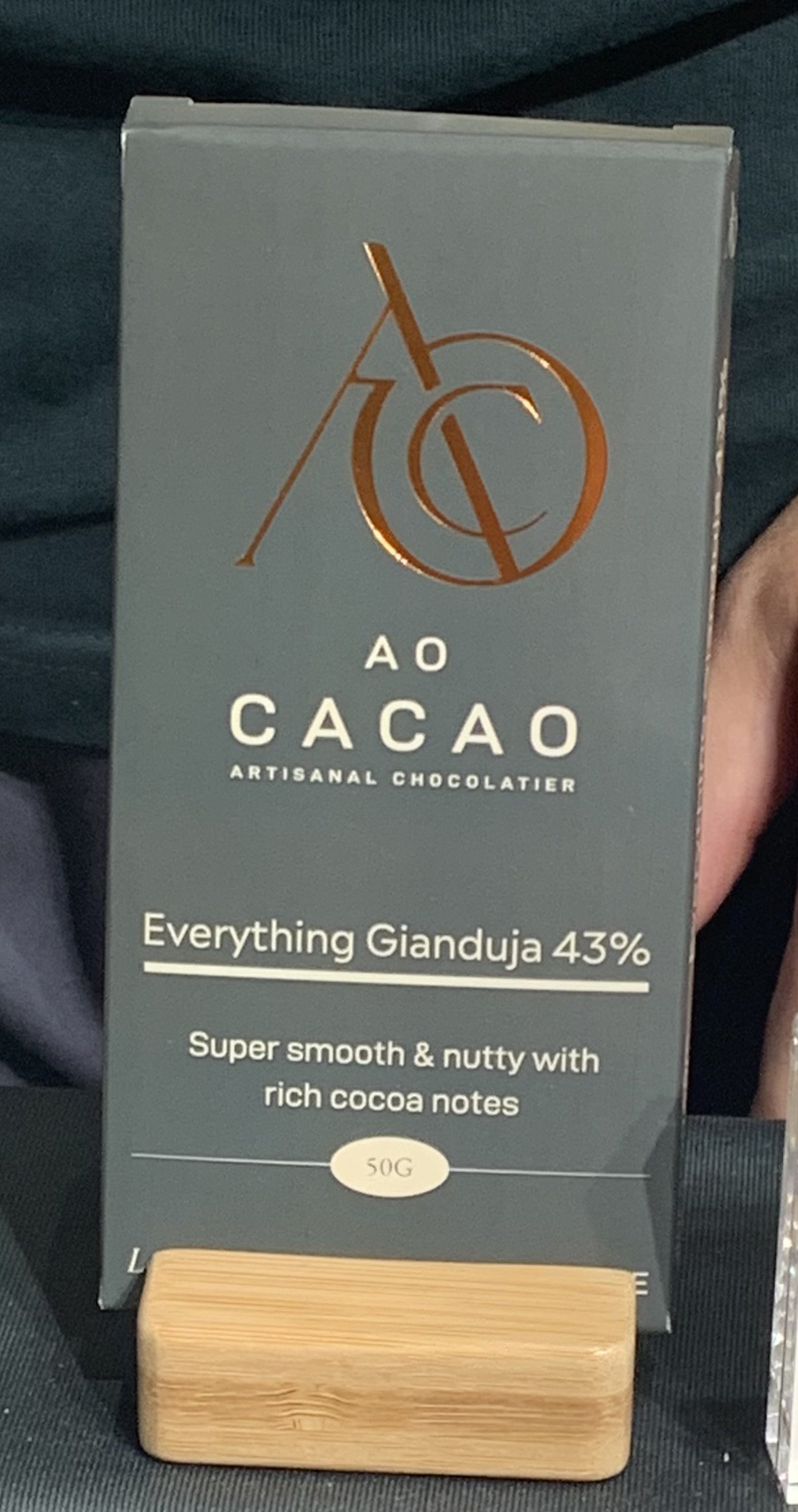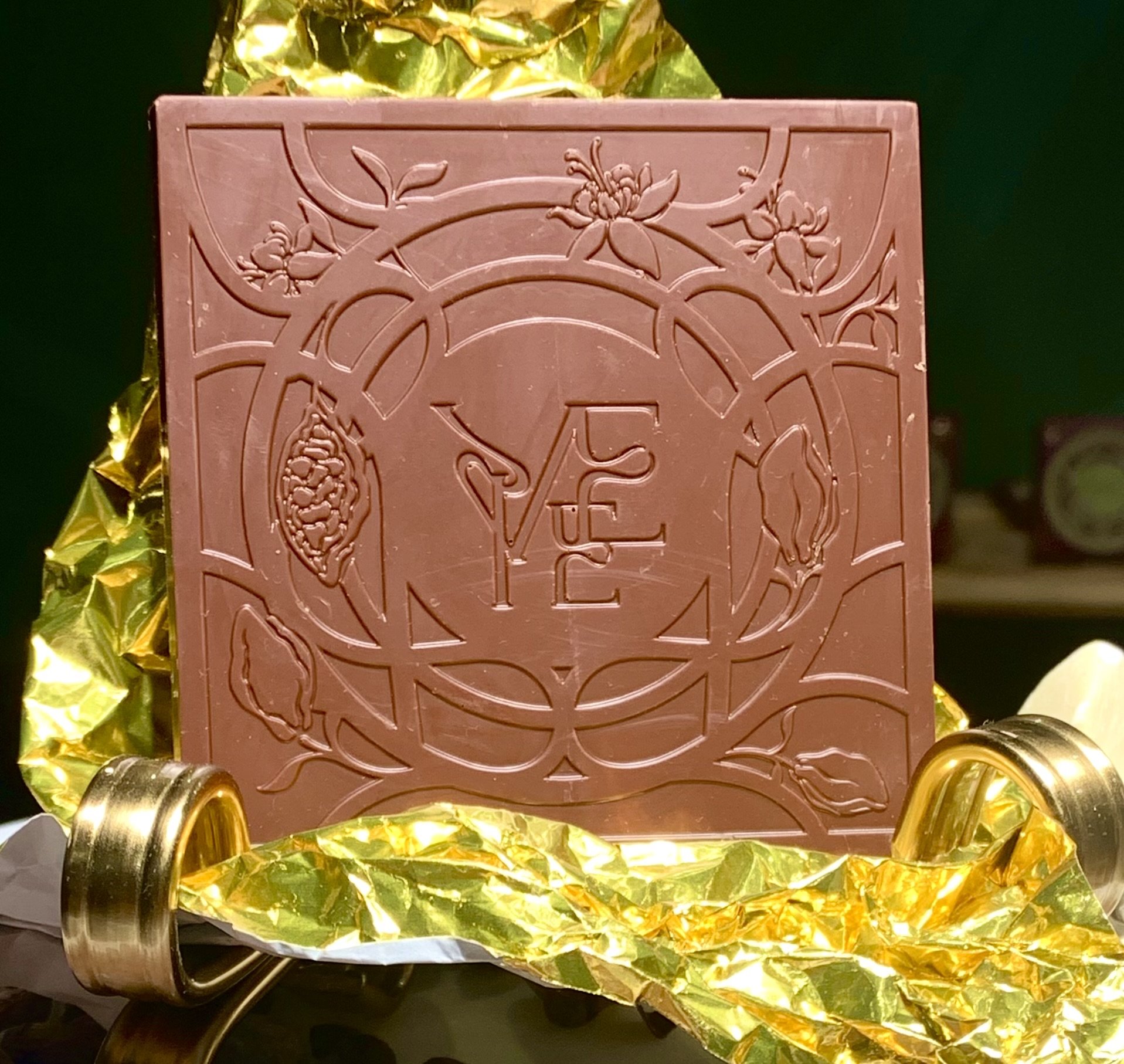Highlights from the Paris Salon du Chocolat
Salon du Chocolat photo credit Anna Mindess
A recent trip to Paris delightedly overlapped with the Salon du Chocolat, billed as the world’s biggest chocolate exposition, which delighted 150,000 fans over five days in October and November at the immense Port de Versailles Exposition Center. Two floors were packed choc-a-block with 500 participants from 60 countries, and featured not only chocolate makers who spanned the globe, but also pastry chefs and related products. Days were filled with demonstrations, competitions, and lectures that focused on topics such as chocolate history, fighting waste and plant-based chocolates. This year’s show featured a special focus on Peru and Japan, plus the wildly popular chocolate fashion show, attended daily by hundreds of fans. Walking around in a blissful chocolatey haze of samples, several stands stood out.
Likkle More, Jamaica
Likkle More’s Nadine Burie photo credit Anna Mindess
Nadine Burie’s color-splattered bars immediately caught my eye as perhaps the most strikingly beautiful chocolate bars at the expo. The trained pastry chef and chocolatier assured me that all those brilliant colors derive from natural fruit and vegetables. Burie, who grew up in the Ivory Coast, moved to Jamaica in 2010 for her husband’s work. At first, she concentrated on making French pastry, which of course involved chocolate, but became intrigued when she realized that Jamaican Trinitario and Criollo were milder than African Forastero.
Likkle More chocolate photo credit Anna Mindess
After three years of research, she started her company in Kingston and named it Likkle More after her favorite Jamaican Patois expression, which means “see you soon” or “a little more.” Burie is thrilled to feature the signature flavors of Jamaica in her bars, including Scotch bonnet peppers, plantains, ginger, and Blue Mountain coffee. And Likkle More’s wrappers burst with the vibrantly hued flowers of her now beloved home. I inquired which was her most popular flavor at the show and she gave me a taste of a divine Jamaican Thyme infused 70% chocolate studded with bits of orange peel; and luckily, she had one bar left.
AO Cacao, New Zealand
AO Cacao founder Thomas Netana Wright photo credit Anna Mindess
I spotted an unusual red, black, and white flag hanging proudly over AO Cacao’s stand. When I spoke with its founder, Thomas Netana Wright, he explained that it’s the flag of the Māori people of New Zealand, and that he is proudly half-Māori on his father’s side. He added that the Indigenous people of New Zealand have lived in the Pacific Islands for more than 300 years and that the name AO means ‘world’ in the Māori language.
AO Cacao Olive Oil Bar photo credit Anna Mindess
Wright’s bean to bar chocolates all incorporate Pacific Polynesian ingredients: including sugar from Samoa and cocoa butter from Papua New Guinea. He appreciates the mild and mellow taste of the Pacific bean. He started this business in 2021, with the goal of honoring the people and the land and works closely with Pacific cacao farmers and Indigenous producers. When I asked for a sample of the bar that he is most proud of, he immediately steered me to one featuring an award-winning New Zealand olive oil and said that the mild micro-climate produces a taste similar to Italian and Greek olive oils. He went on to describe his special processing procedure, which incorporates 90 hours of melanging and conching to produce an extremely smooth chocolate.
AO Cacao Everything Gianduja Bar. Photo credit Anna Mindess
After stating how proud he was of his Māori roots, he added that he is equally proud of his Jewish roots on his mother’s side. In fact, he has plans to have all his chocolates certified Kosher in a few weeks by a Kosher baker in Auckland. The two have additional plans, including a future challah or bagel infused chocolate, in which the baker would dehydrate the bread into a powder and Wright would add cocoa butter to work it into his chocolates. He also confided that the name of his “Everything Gianduja” bar is a special wink to the infamous “everything bagels.” Read more about AO Cacao and producers from New Zealand.
Dengo milk chocolate with pineapple and coconut photo credit Anna Mindess
Dengo, Brazil
Another brilliantly hued corner caught my eye, where the neon-colored backdrop turned out to be a mosaic of their chocolate bar labels. Dengo (which means affection in Portuguese) is committed to respecting, supporting their farmers, and paying them fairly. In fact, a poster outside their stand lists the names of 39 cocoa farmers, who grow Cabruca cocoa in Amazonian agroforestry systems for them. They are committed to doubling the acreage of preserved forests in Brazil as well as doubling the income of more than 3000 Brazilian cocoa farmers by 2030. They also aim to use less sugar and less packaging materials. Of course, it all depends on the taste of their products, and I particularly liked their milk chocolate with pineapple and coconut.
Marushichi Seicha, Japan
Premium Matcha 7-Marushichi Seicha photo credit Anna Mindess
With the exposition’s special focus on Japan, there were several stands featuring mochi, or flavors such as shiso and yuzu, but one had a unique focus on matcha tea. In a tasting dish, I sampled four variations of chocolate + matcha, featuring increasing strengths of the green tea. Later, I learned some of the background of its matcha tea company Marushichi Seicha (founded in 1907) and how the eighth-generation owner, Suzuki Shigehiko, has tried to broaden the audience for his matcha products, first with a line of increasingly strong matcha gelatos and then matcha chocolates, which won silver and bronze chocolate awards in 2018.
IVEE Promenade bar photo credit Anna Mindess
IVEE Promenade, Poland
IVEE Promenade had an impressive, eye-catching stand. It turns out this brand-new Polish-owned, family-run company was making its debut at the Paris exposition. They use cocoa beans from Uganda, Madagascar and Congo and offer a range of cocoa percentages. To strictly honor the chocolate itself, they do not add any artificial flavors or incorporate additions such as flower petals or dried fruits. Instead, they utilize special techniques to ferment their cacao nibs with fruit (such as plums, blackcurrants, and apricots). I sampled these and they are sublime. This process leads to their most sophisticated mixtures in which they age cacao nibs in beverages such as whisky and beer. After a taste, I went home with an elegant large tile, whose chocolate was aged in blackcurrant wine.
Chocolate fashion show at the Paris Salon du Chocolat. Photo credit Anna Mindess
The upper floor of the exposition center featured stands with mainly French offerings, such as pastries, plus chocolates in all shapes from the ubiquitous Eiffel Tower to VW bugs, pencils, and teddy bears. But the big draw upstairs was the stage where every seat was taken hours before the eagerly anticipated fashion show. Professional models donned a dozen chocolate-themed outfits. Although they preened up and down the runway, hopefully no one worked up a sweat. (I didn’t notice any of them melting.)










